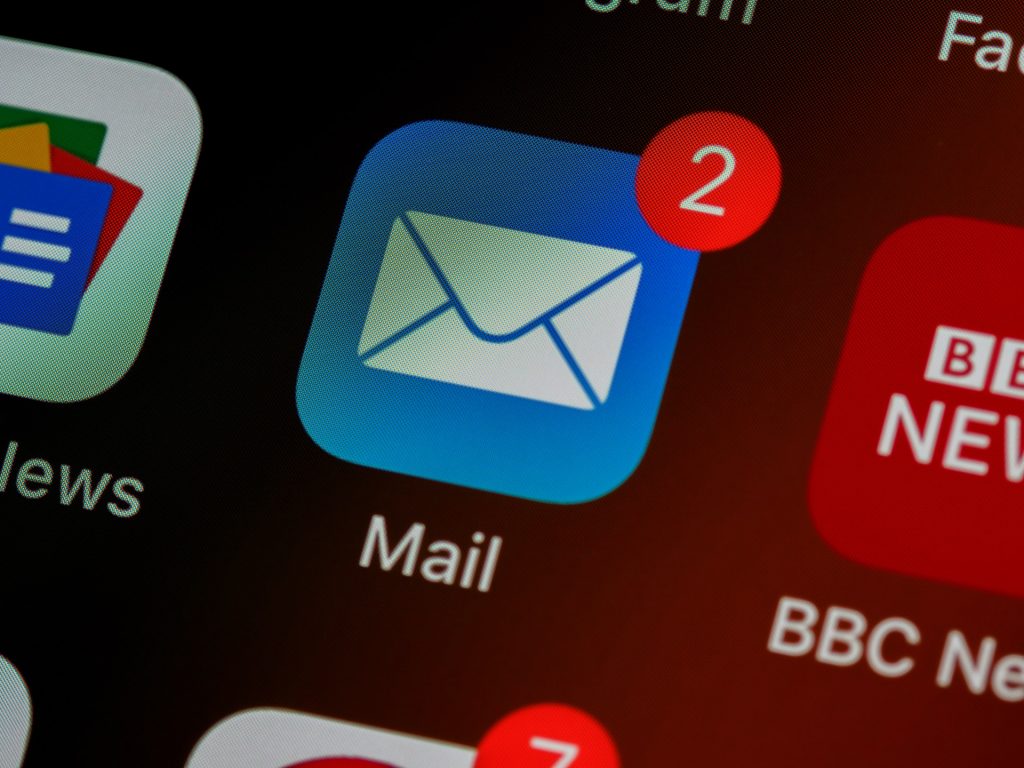How Many Emails Are Sent per Day in 2024?
 Fact-checked
Fact-checked
Last Updated: February 13, 2024
Dear Sir or Madam,
Did you know that:
The electronic mail (or simply email) was invented by Ray Tomlinson in the 1960s. Since then, it has become one of the most useful inventions for personal and business use.
One could ask straight away – does anyone even need physical letters now that we have instant messaging and emails?
And speaking of emails, do you know how many emails are sent per day? Do you want to find out?
The answer might surprise you.
Today you’ll read about the most interesting and significant email statistics of 2022.
Now, without further ado, let’s begin!
First, here are the most fascinating email facts.
Fascinating Facts and Email Stats 2022
- 300.4 billion emails were sent and received every day in 2020.
- In 2019, there are nearly 4 billion email users worldwide.
- The active email accounts worldwide are about 5.59 billion.
- There are about 1.8 billion Gmail accounts worldwide.
- The average office worker receives about 121 emails daily.
- 40 is the average number of emails per day a person sends for business purposes.
- In December 2018, 43% of all emails were opened via mobile.
Wow! Who knew email was still so popular!
But we’re just getting started. Check out all these recent email usage statistics:
1.There were 306.4 billion emails sent and received daily in 2020.
(Source: Statista)
Can you imagine?
If we’d had to send that many letters by post in the olden days, all the pigeons and horses in the world wouldn’t have been enough.
Well, now that we’ve talked about how many emails are sent per day, let’s dig deeper.
- There are more than 149,513 emails sent each minute.
That’s insane!
So how many emails does the average person receive per day then?
- The number is around 121 emails daily for an office worker.
Those poor working people! At least some of these emails are spam, though, so you don’t have to deal with all of them.
Luckily, this means out of those 121 emails mentioned, you need to respond to only about 40. That still seems like a lot to some people, but it’s manageable. I believe in you and your virtual assistants!
Now let’s see some info about email users – that way you’ll know you’re not alone.
2. There are nearly 4 billion email users worldwide.
(Source: Statista)
With so many people in the world who use email, the number of emails sent is bound to be ridiculously high. Of course, the number of email users keeps growing, as well as the number of emails. Interestingly,
- The active email accounts worldwide are around 5.59 billion.
- The average person has 1.75 email accounts.
- The best time to send an email is Tuesday.
This means that many people have two or more email accounts that they use simultaneously. That’s not surprising – most of us have a personal email account and a separate one for work. That’s how you keep it neat and tidy – and professional. Look at you, all grown up!
By the way:
- There are around 1.8 billion Gmail accounts worldwide.
Another stat that’s not too surprising. Many users prefer Google’s email service because it’s convenient and offers a lot of storage. Its search-oriented interface and spam filter are a bonus too.
Everyone knows that being thoughtful and always double checking if you’ve attached all files before hitting “Send” will get you in your correspondents’ good books. That doesn’t always work out like that, though, does it?
Luckily, in Gmail, you have the option to “Undo” your actions. That way, if you press “Send” and immediately have a dreadful realization you’ve made a mistake, you can remove all traces – no harm done! That way you can appear even smarter than you are (like we all aim to do when we get the chance).
Phew! (Well, it happens to the best of us, so don’t worry that much even if you double email once or twice).
But let’s move on already – here’s some info specifically for the US:
3. Over 90% of all US adults use email.
(Source: Statista)
This number is still on the rise.
- In 2019 there were 251.8 million US email users.
- The number of email users in the US is expected to increase by 6 million a year, while worldwide it will increase by 100 million a year.
- However, only 26% of US adults have used email as means of communication during the Covid-19 pandemic in 2020.
With more and more people becoming computer literate, this growth forecast is only natural. Moreover, they don’t need a computer to check their emails regularly.
4. 85% of users check their emails on a mobile phone.
(Source: Adobe)
We can’t live without our smartphones anyway, so it’s great that we can at least use them to check our emails and receive instant notifications when we get a new one.
- 90% of users aged between 25 and 34 check their emails on a cell phone.
Users in their 20s and 30s are more likely to use a smartphone to check their inbox.
While the tendency of checking emails on a mobile phone is growing, the use of desktop and laptop computers for the same task is dropping.
- Only 69% of users checked their emails via desktop/laptop in 2018.
In 2017, the percentage was 74.
Hey, I’ve just had a thought – why not travel around the world a bit? We’ve been to the US, now let’s see how other places are doing!
5. Nearly 24% of all spam emails came from Russia in 2020.
(Source: Statista)
You naughty guys! Russia stole first place in terms of spam right under the US’s nose. I don’t know if that’s a good thing to be famous for though…
- In 2018, spam emails coming from the US were a bit more than 9%.
- Now they are 10.85% and come third.
But which country comes second?
- It’s Germany with 11.01%.
- China fell down from first place to fifth with 6.33%.
So big countries generate more spam emails, but it’s not only size that matters.
Here are the countries on the opposite side of the spectrum:
- Poland had the smallest share of spam emails – 1.8%.
- Japan accounted for 2.3%.
- Spain clocked at 2.52%.
Now it’s time for some fun email users statistics.
6. Most people check their email every few hours.
(Source: Adobe)
- In 2018, 49% of users surveyed said they check their work email every few hours when they’re not at work. For comparison, in 2017 this was 44%.
- 52% checked their personal emails as often as that in 2018, while in 2017, it was a similar number – 51%.
And now the good news:
- In 2017, 11% of users were constantly checking their emails, while in 2018 the number dropped to 9%.
Good job! No one needs to be a slave to their email.
It’s funny that:
- In 2018, 60% of people checked their personal and 41% their work emails while watching TV or a movie.
Does the show suck that much or are you waiting nervously for an email? Or both?
Is work all you think about? Let’s see the work-related email stats then.
7. Employees spend 16% of their average workweek on emails.
(Source: WorkFront)
- That amounts to 15,5 hours per week.
OK, that’s not so bad… However:
- 55% of workers agree that excessive emails prevent them from doing their primary job duties.
Well, that’s annoying. Not everyone is a natural email writer, in spite of all writing assistance apps at hand. And the rest of the work won’t do itself, unfortunately.
Congrats! What a relief it must be to have no emails to respond to! Sometimes having a 0 is a good thing.
And I’m sure you can relate to the next stat:
- 25% of email users really don’t like emails that say “Not sure if you saw my last email” and the like.
I get it. Like, chill, bro, don’t be so annoying! Patience is a virtue, you know? I will get to it when I get to it. No need to rush! *squeezing a stress ball aggressively, while trying not to hyperventilate*
Right. Glad we cleared that up.
And finally, here are some email marketing stats for dessert:
8. 50% of consumers prefer communicating with brands via email.
(Source: Adobe)
That’s right, who needs phones anyway? Emails are way less awkward and pressure-free. (Although they still can feel a bit awkward, am I right? Like, are you being too formal and uptight, or on the contrary – are you sounding like you’re not taking this seriously? Who is the person you’re addressing again? Are you overthinking everything as usual? I’ve been staring at this unsent email for hours… HELP.)
- Chatbots are the least liked communication channel – they get only 3%.
- And yet, 1.3 billion internet users regularly interact with chatbots.
- The most popular means of communication is texting.
Get me a real person here right now!
- Social media communication, phone calls, and the brand’s mobile apps are at 7% each.
So what should we take from this? Always offer customers various channels of communication, and especially email, to keep everyone happy.
Just don’t get too eager because
- 73% of people use the “Unsubscribe” link or button to get rid of unwanted emails.
People have a low tolerance for spam and they get too many emails, so be careful. Otherwise, your emails will be deleted, tagged as spam, or simply ignored. What a shame.
You thought we’re done but guess again! There’s more!
Here are people’s burning questions regarding emails.
Wrapping Up
Weren’t these facts and stats about emails entertaining?
Now you know how many emails are sent per day. This could be an eye-opening, life-changing moment for you! Realizing how many wanted and unwanted emails people get means you’ll probably be more careful not to send repetitive and too frequent emails to your business partners in the future. They’ll love you for it, guaranteed!
You can take advantage of these insights and alter the statistics.
Let me send you on your way with an ancient saying:
“May your emails never go to the Spam folder and always get opened and answered!”
See you next time!
Best regards.
FAQ
The number of emails sent per day is 293.6 billion. CLICK TO TWEET
Not all of them get read, though. And a great part of them is spam and/or malware.
40 are the emails sent per day on average per person. CLICK TO TWEET
At least if we’re talking about business emails. It is interesting that the average office worker receives about 121 emails per day. This suggests more than half of them are spam or other miscellaneous emails.
Now that you know how many emails are sent every day, let’s be more specific:
45% of all emails are spam. This is an outrageous number. Advertisements, scams, fraud emails – no, thank you! Begone! No need to fill our inbox with that stuff. Unfortunately, sometimes even the best email services are unable to filter them out.
Speaking of spam, there are 3.4 billion fake emails sent per day. Phishing is a popular sport, apparently. The regular kind of fishing is way more relaxing, though.
46% of all emails last year were opened on a mobile device. Anyone surprised? I bet you $5 that every year this number will increase since we’ve started using our beloved smartphones for everything.
There is a nearly 25% open rate for emails. Businesses strive to beat competitors’ marketing and send more attractive emails so that more customers open them.
Yes, Gmail does have a limit on the number of emails you can send per day, but it’s pretty generous – that’s 500 emails in 24 hours. Seems more than plenty.
Canadian Pharmacy was the biggest spammer in 2020. The company sent 388 emails on average per user. Cheeky.
5 Comments
Leave a Reply
You must be logged in to post a comment.






![Digital Marketing Funnel [Definition, Components and Examples]](https://review42.com/wp-content/uploads/2022/09/Digital-marketing-funnel.png)
![How to Cancel YouTube TV? [Step-By-Step Guide]](https://review42.com/wp-content/uploads/2022/09/How-to-cancel-youtube-tv.png)
![Forex Trading Taxes [Comprehensive 2024 Guide]](https://review42.com/wp-content/uploads/2022/09/Forex-trading-taxes.png)
![Swing Trading vs Day Trading [Differences, Pros & Cons]](https://review42.com/wp-content/uploads/2022/09/Swing-trading-vs-day-trading.png)

![How to Watch TV Without Internet? [2024’s Guide]](https://review42.com/wp-content/uploads/2022/09/How-to-watch-TV-without-internet.png)

Ayalaan
March 29, 2021 at 6:45 am
Thanks for sharing this type of information.
M106.COM Directory
April 16, 2021 at 11:47 am
Gloriously expert position. I merely bumbled upon your post and desired to articulate that I have really relished understanding your blog articles.
Ekonomia
April 18, 2021 at 5:28 am
Straightforward and written well, thank you for the info
Web Directory
June 3, 2021 at 2:00 am
We are a group of volunteers and opening a new scheme in our community. Your site provided us with helpful info to paintings on. You have performed a formidable task and our whole neighborhood will likely be grateful to you.